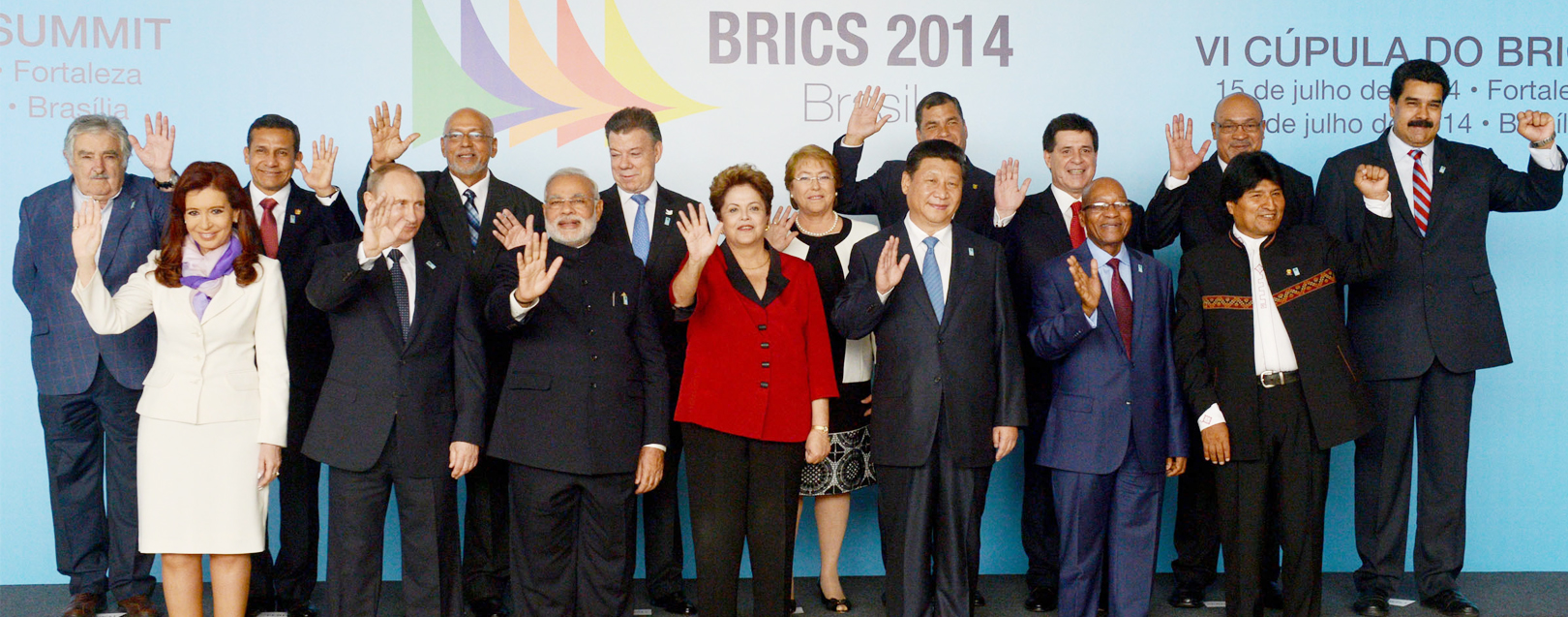
BRICS New Development Bank, a gamechanger
Bidhu Bhushan Palo | @TheDollarBiz
 (L-R) Russian President Vladimir Putin, Indian Prime Minister Narendra Modi, Brazil's President Dilma Rousseff, Chinese President Xi Jinping, and South African President Jacob Zuma
(L-R) Russian President Vladimir Putin, Indian Prime Minister Narendra Modi, Brazil's President Dilma Rousseff, Chinese President Xi Jinping, and South African President Jacob ZumaLast week, the BRICS forum, comprising five emerging economies - Brazil, Russia, India, China and South Africa – announced that a New Development Bank (NBD) will be formed with an initial authorised capital and an initial subscribed capital of $100 billion and $50 billion respectively, which would be equally shared among founding members. This was not really a “shock and awe” moment, but the implications are larger than they seem. The World Bank and the IMF claim that they are “twin intergovernmental pillars supporting the structure of the world's economic and financial order.” However, developing countries have long complained that they do not get timely and sufficient access to financial resources. Experts say that the NDB and the Contingent Reserve Arrangement (CRA) could be the much needed third and fourth pillars for the world. BRICS accounts for about 19.8% of global GDP and 16.9% of global trade. The overall exports by the five nations have surged by a whopping 500% between 2001 and 2011, and between 2008 and 2012 during the economic slowdown, the group's global trade increased around 42%, from $4.3 to $6.1 trillion dollars (including $3.19 trillion worth exports and $2.95 trillion worth imports). Contingency funds could buffer currency fluctuations and solve balance of payment problems for Asian and other developing countries. This could propel BRICS trade significantly. Notably, BRICS leaders have said that the NDB and the CRA will also protect other developing countries overcome financial fluctuations and help address financing constraints regarding investment in infrastructure. This is something both IMF and the World Bank agree. A World Bank spokesperson told The Dollar Business, “A driving force behind the BRICS bank is the desire to increase investment in infrastructure. If you look at infrastructure needs in the world today, the most modest estimate is that developing countries need an additional $1 trillion of investment in infrastructure every year. There is a huge need for financing and there is capital sitting on the sidelines. We welcome all efforts to mobilize additional capital to meet the infrastructure financing gap…We welcome them because the problem is much bigger than our combined resources to tackle it.” The International Monetary Fund (IMF) and the World Bank have welcomed BRICS nations for setting up the CRA and the NDB. However, changes may be underway. BRICS members have urged the World Bank to have more democratic governance structures to improve functioning. Responding to this, the World Bank Spokesperson says, “The World Bank Governors approved adjustments to shareholdings to increase the representation of developing countries in 2009 and in 2010. Governors also agreed in 2010 to conduct every five years IBRD shareholding reviews to reflect economic changes in IBRD shareholding. The next shareholding review is due by the 2015 Annual Meetings.”


 to success.
to success.